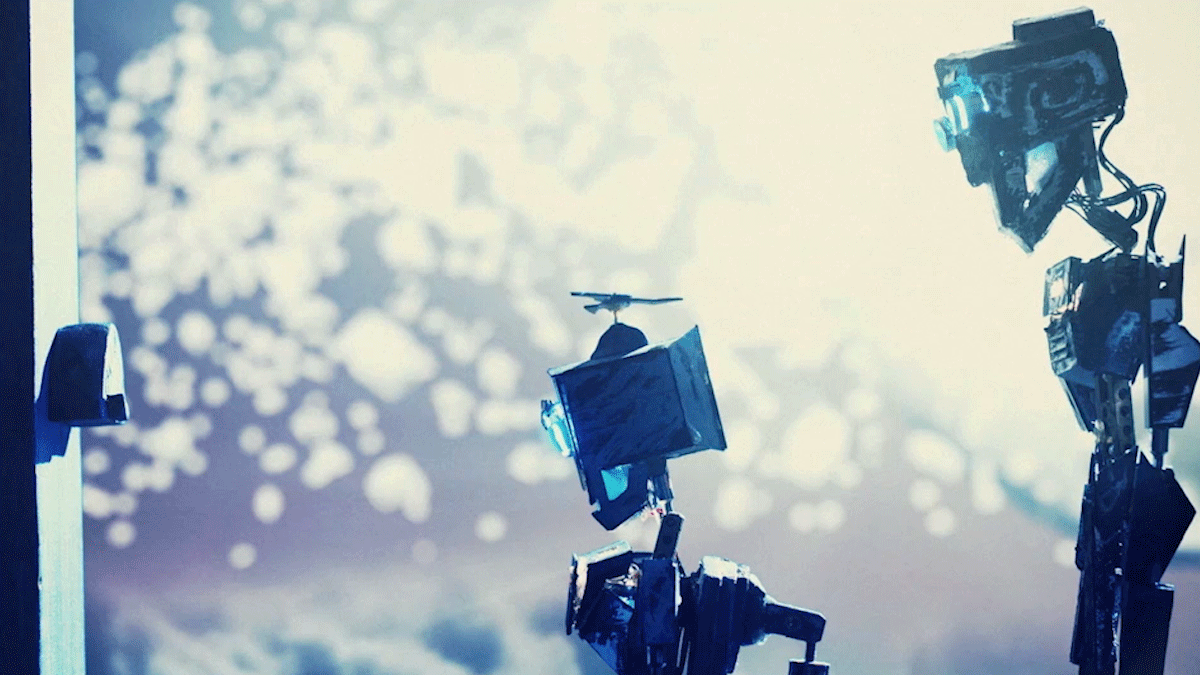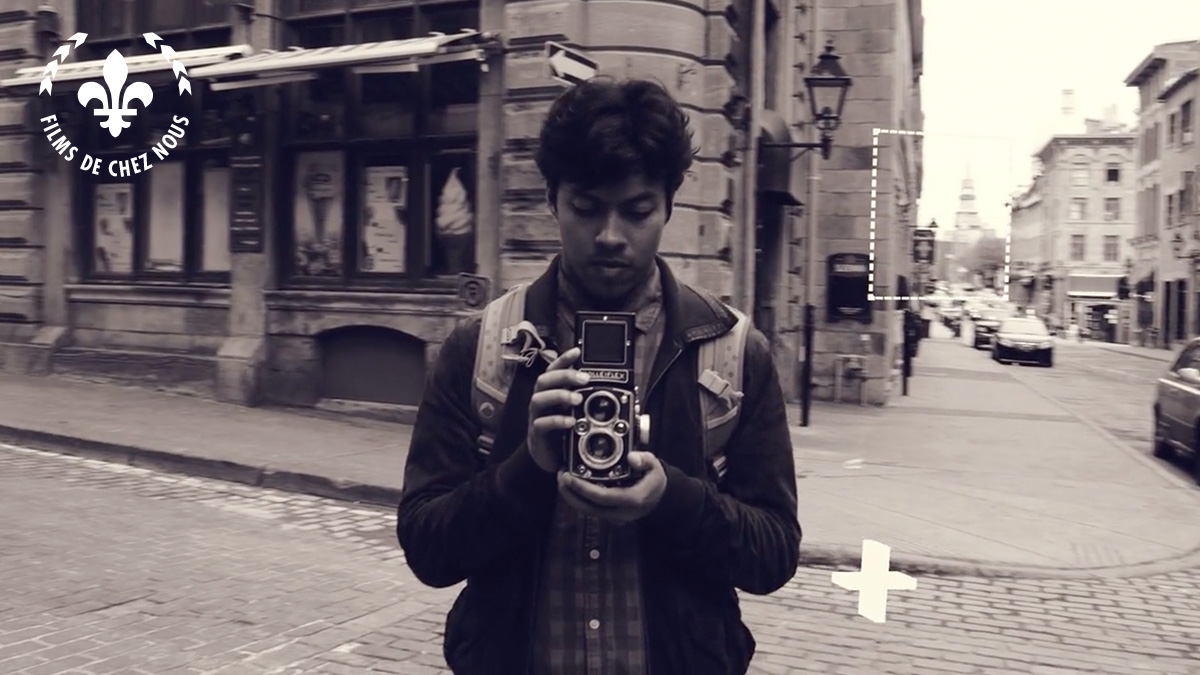A creature wanders the woods looking for clues about his past life, only to find the answers within the shadows of his mind
“Creature Comfort” by Ryan Oligmueller is a poignant stop-motion animation that delves into the enigmatic journey of a creature traversing the woods, seeking fragments of its past. With an emotive narrative woven through shadows and introspection, the film artfully explores themes of self-discovery and the complexities of existence. Director Ryan Oligmueller, an award-winning filmmaker known for his heartfelt storytelling, brings this project to life as an ode to both stop-motion animation and a continued effort to shed light on mental health awareness.
The film stands as a testament to Oligmueller’s commitment to showcasing the intricacies of life’s beauty and challenges. Rooted in his personal experiences, “Creature Comfort” encapsulates the duality of life’s wonders and struggles, offering a profound reflection on the shared human experience. Oligmueller’s dedication to this project, alongside a talented team, results in a narrative that resonates universally, speaking to the resilience and vulnerabilities of all beings.

“Creature Comfort” delves into themes of self-discovery and mental health. What inspired you to use stop-motion animation as a medium to explore these complex and personal themes?
I have always felt the deepest connection with animation. I was inspired to use stop-motion animation as the basis for Creature Comfort because to truly have an impact on the viewer, the film needed to feel physical, textured, and surreal; all attributes that define the beauty and complexity of stop-motion animation. With the topic of mental health at the forefront of the film, I wanted to make sure that the animation style was inviting. The idea was to use a child-like visual language, contrasted by the graphic nature of the story. There is no other form of animation that I believe could have successfully brought this story to life, or could have engaged the viewer the way it was supposed to.
The film follows a creature searching for clues about its past life. Can you discuss the creative process behind portraying this journey of self-discovery, and how the animation style adds depth to the storytelling?
The creative process of the film, especially in pre-production, was daunting. There were a lot of different routes to go in terms of bringing this journey of self-discovery to life. But, as I looked at the different paths these characters could take, it made the most sense to allow both the human and creature to work their way into discovering each other, with this realization that they are one. In terms of the storytelling, the connective tissue between the human and creature characters was made entirely possible by the use of stop-motion animation. This medium adds depth to the characters not only because they feel real within their environment, but that this textured world allows for the creature and human to co-exist.
How did you approach representing the beauty and the challenges of life through the creature’s journey, and what message do you hope viewers take away regarding mental health?
This creature became my vessel to voice the struggles I myself was dealing with at the time, but to also widely address how mental health affects everyone. No matter the day, good and bad, we all can succumb to the dangers our psyche puts us in. I wanted to make sure this creature felt real, and felt like a piece of the audience, knowing that each and every one of us hurts and sometimes, all we need is a helping hand to make life just a little bit better. I hope those who watch the film, and especially those who are struggling, can see the beauty within life. You are not alone.

Stop-motion animation requires intricate craftsmanship. Can you discuss the challenges and rewards of using this particular animation style to convey the emotions and struggles of the character?
The 2 biggest challenges of stop-motion animation, to me, are time and money. While this medium is incredibly complex with a lot of moving parts, the biggest disadvantage you have when making a film like this is the cost and production time. But, when you see the first shot come to life, it injects so much hope and inspiration that you kind of ride that high until the end of the film. Seeing an animatic fill up with moving images of the characters is not only rewarding, but life-changing. The first time I saw the creature move, I felt such a deep connection with him. He was alive, he was there to walk me through this creative process. It was surreal and overshadowed any self doubt or stressors.
The film emphasizes the shared human experience of facing difficulties in life. Can you elaborate on how you integrated personal experiences and emotions into the film’s narrative and visual storytelling?
During the making of the film, I was dealing with death in my family, and personal difficulties that all felt a bit too overwhelming. This idea spawned from that time in my life where I wasn’t quite sure of who I was or where I was going. I tried to integrate these experiences specifically in the relationship between the creature and human, and also in the visual storytelling of the film. I opted for minimal dialogue because I wanted the audience to feel the emotion. Only you can hear your inner dialogue. I wanted Creature Comfort to act as a blank canvas for the audience member; where we collectively view the film differently, letting our inner dialogue inform us of the human and creature’s situation, while realizing we all share this same experience sometimes.

The concept of finding answers within oneself is central to the film. How did you navigate the depiction of the creature’s inner journey and the revelations it uncovers within the shadows of its mind?
Anytime you make a film that deals with heavy topics, there needs to be a certain care and understanding of that subject matter. In terms of the creature’s journey, it was pivotal to make sure that this was not a manufactured journey that felt phony or unrelatable. For such dark subject matter, I spent a lot of time navigating how to treat this story with as much care and diligence that it required. I believe this led to every decision in regards to how a revelation was revealed, specifically in the more graphic and tense scenes with the human character.
The title, “Creature Comfort,” suggests a sense of seeking solace. Can you discuss the significance of this title and how it relates to the film’s exploration of mental health and self-acceptance?
We all have creature comforts in life. Maybe it’s your favorite spot to eat. Maybe it’s your favorite song. To me, my creature comfort is the part of me that tells myself that everything is going to be okay. That life is grand, hard, but worth living. This title refers directly to the creature(s) within the film who look after one another, but also points to the inner voice that tries to look after us. I believe those with mental health issues can try and find that creature comfort to find solace within themselves and the life they live.
Collaboration often plays a crucial role in filmmaking. How did your team contribute to bringing this vision to life, especially considering the intricate nature of stop-motion animation?
This film wouldn’t be what it is without the talented and incredibly hard working Aiden Whittam, Anna Taylor, Ruby Black, and Adèle Pinchot; the animation team. I met Aiden, our lead animator, on Instagram. I saw his work and was blown away by its ingenuity and distinct visual flare. Once we started working on the film, Aiden was able to clearly take all of the crazy ideas in my head, and physically place them in the real world. The entire animation team worked tirelessly on building this world from scratch; from the shoelaces on the human’s shoes, to the complicated river set at the end of the film, these incredible animators helped bring my vision to life. Collaboration is truly a gift. You realize at a certain point in your career, that you need help, and that doing things by yourself is pointless. Working with others day in and day out to create art is one of the greatest experiences and emotions I have felt.
What impact do you hope “Creature Comfort” will have on audiences, particularly in fostering conversations or reflections on mental health and the human experience?
I hope Creature Comfort can speak to those who are in troubling times in their lives, knowing that while life can be unpredictable and messy, there is always beauty to be found. One of my main goals with the film was to shed more light on mental health, as I wish it was more seriously talked about in today’s culture. All people struggle and all people hurt, and this film can hopefully be a vessel to those who need someone to talk to, and those who need to be told that everything will be okay.
Are there any Stop-Motion short films that have inspired you directly?
The short film that inspired me to jump into this world of stop-motion was the incredible and unforgettable Negative Space. Not only is this my favorite short film, but it is undoubtedly my favorite film of all time. I saw this film at a local independent theater that was showing all of the oscar-nominated shorts, and was completely blown away by how ingenious the film made me think about my own life and circumstances. I realized that animation can take you into a world like no other medium can. Negative Space truly embodies the phrase “Animation is Cinema”, and should be considered a must-watch for those who are interested and passionate about film.
Can you tell us which are your all-time favorite short films?
My all-time favorite short films are:
– Negative Space
– The Phantom 52
– The Wrong Trousers
– Frank Embree




